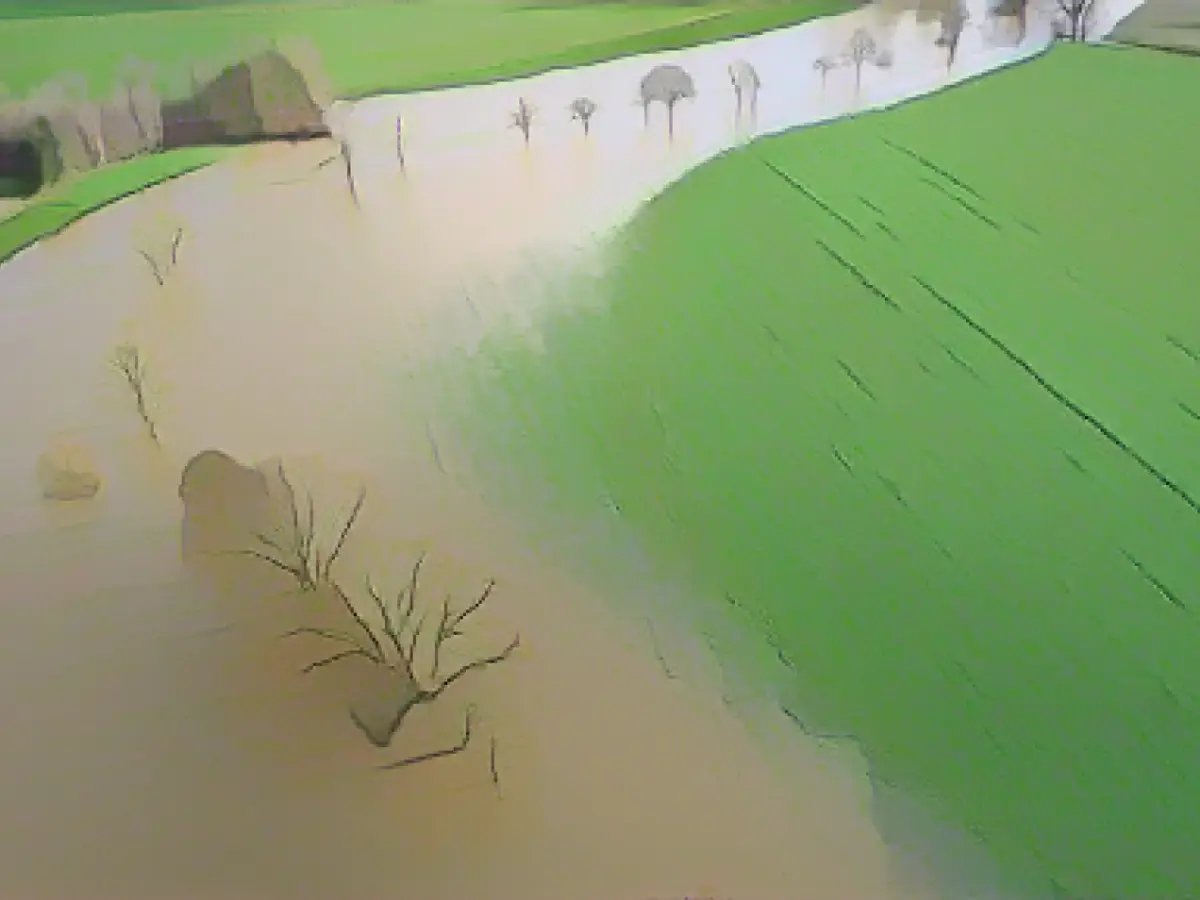Drought despite continuous rain? - Groundwater levels in Germany are rising - but not sufficiently everywhere
After several exceptionally dry years, the soil and groundwater levels in Germany have recovered this year. It was a good year for the water balance, said Andreas Marx, Head of the Drought Monitor at the Helmholtz Center for Environmental Research (UFZ) in Leipzig. The large amount of rain had meant that 2023 was not a pronounced drought year. Over the past winter, groundwater levels have recovered well after the very dry years since 2018.
According to Marx, the soil is currently soaking wet to a depth of 60 centimetres. In Lower Saxony and North Rhine-Westphalia, the soils are statistically only as wet as every ten years, even at a depth of up to two meters. In eastern Germany, particularly in Brandenburg, Saxony and the north of Saxony-Anhalt, groundwater levels were also rising. However, according to Marx, it has not yet rained enough for the levels to return to normal.
How the Helmholtz Center calculates the drought factor
Scientists speak of drought when the soil is drier than can be statistically expected. In the Helmholtz Center's monitor, the scientists go back to 1951 and then compare the period up to 2015 with the current situation. "We have been experiencing below-average precipitation for several years," explained Andreas Marx at the end of September. "At the same time, we've had three years of extreme heatwaves. As a result, the soils in Germany have also been much drier than normal over the last five years. The unusual thing about this is that in some regions, the soil has not emerged from drought conditions for more than five years, even at great depths."
Despite the improved drought situation, the dry years could still cause further damage, according to Marx. In the years since 2018, Germany has found itself in "a completely new situation", which has not yet been resolved in the east: "In 2018, major damage occurred across the board in agriculture in Germany. In the following years, the damage was less severe. In forestry, too, it all started in 2018. Due to the drought and mild winters, the beetles in German forests have multiplied greatly. Foresters are therefore concerned that forest dieback will continue in 2023," says Andreas Marx.
Even if the drought situation in Germany has improved, global warming is likely to continue unabated. The German Weather Service (DWD) found that 2023 was the warmest year in Germany since records began in 1881. The average temperature is expected to be 10.6 degrees, said a DWD spokesperson on Wednesday, five days before the end of the calendar year.
Read also:
- This will change in December
- Attacks on ships in the Red Sea: shipping companies avoid important trade route
- Houthi rebels want to launch further attacks despite international coalition
- USA forms military coalition against Houthi attacks on ships in the Red Sea
Despite the improvement, not all regions in Germany have reached normal groundwater levels yet. In Brandenburg, Saxony, and the north of Saxony-Anhalt, groundwater levels are rising, but they have not yet returned to their usual levels due to insufficient rainfall.
Andreas Marx, Head of the Drought Monitor at the Helmholtz Center for Environmental Research - UFZ in Leipzig, mentioned that the soil in Lower Saxony and North Rhine-Westphalia is currently only as wet as every ten years, even up to two meters deep.
Despite the continuous rain in much of Germany, the soil in eastern Germany has not completely emerged from drought conditions. This prolonged dryness has resulted in significant damage to agriculture and forests in the past few years.
Andreas Marx pointed out that in some regions, the soil has not been free from drought for more than five years, even at great depths. This is an unprecedented situation in eastern Germany, which is still being addressed.
Germany has experienced several exceptionally dry years since 2018, leading to drought conditions across the country. Despite the improved situation this year, the dry years have left lasting impacts, particularly in agriculture and forestry.
In arid regions like Lower Saxony and North Rhine-Westphalia, the soils have only regained their wetness every ten years, reflecting the severe impact of the prolonged drought.
Source: www.stern.de







